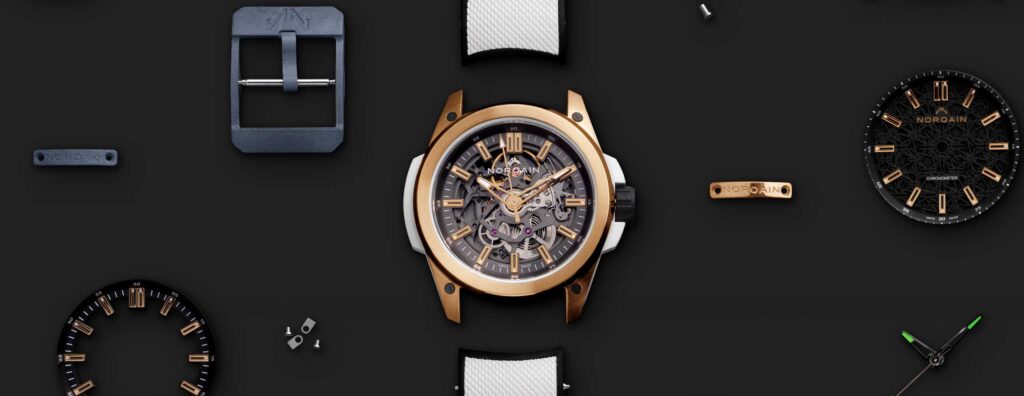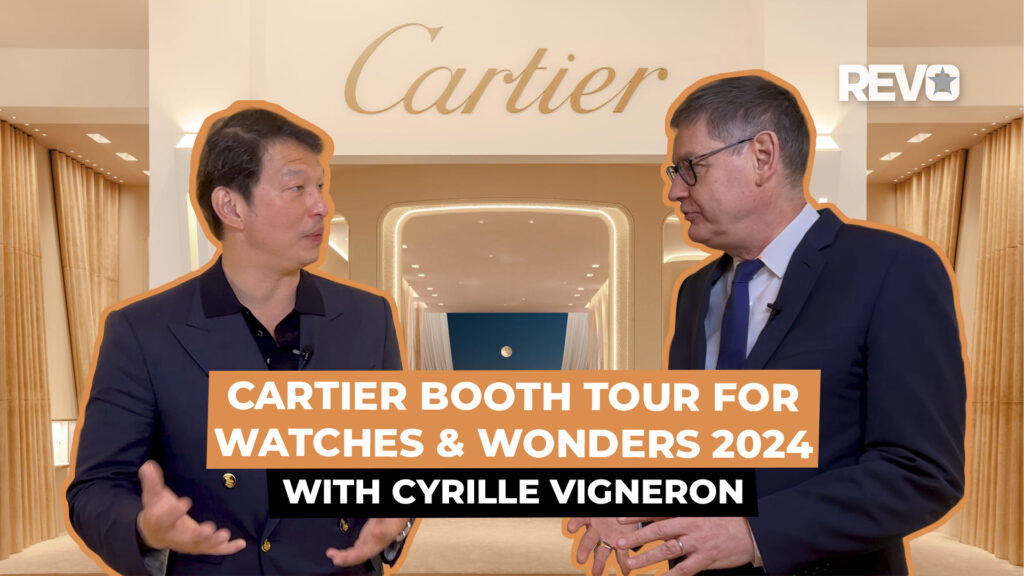MB&F
The Reuge x MB&F MusicMachine 1 Reloaded, a nostalgia trip worth taking
MB&F
The Reuge x MB&F MusicMachine 1 Reloaded, a nostalgia trip worth taking
The Design, Reloaded
For the ninth year of the MusicMachine’s existence, MB&F is updating the original, but working with a completely different designer in Maximillian Maertens, an ECAL (École cantonale d’art de Lausannne) design graduate, who started as an intern with MB&F in August 2017. Since then, he has gone on to design various other co-creation projects such as the Orb and T-Rex table clocks so he is no stranger to communicating through such a futuristic design language. He describes the evolution of the Reloaded’s design as creating “more airflow”, but this openness comes with a layer of complexity. Instead of the entire musical mechanism sitting atop the bullet-shaped main body, it now sits within a fuselage with an additional swooping arc traversing along the top of the machine and dividing the mechanism visually into its two individual halves. The main body was previously made of lacquered walnut for sound amplification purposes but it is now machined out of the same anodized aluminium as the swept-back, three-pointed struts and landing gear. These subtle changes helped achieve Maertens’ intended design goal of a single, fused, streamlined shape with added aerodynamics. The MusicMachine looks to be flying through hyperspace even while standing still.

The Music, Remixed
The Reloaded’s six musical melodies remain unchanged from the first MusicMachine’s, each having been picked out by Max Büsser himself. The left cylinder contains three pieces from Star Wars and Star Trek, the two most iconic science-fiction cinematic franchises. You get both uplifting theme songs and the ominous “Imperial March” from The Empire Strikes Back. The right cylinder houses another three iconic tunes, but this time from the world of rock ‘n’ roll. John Lennon’s “Imagine”, Deep Purple’s “Smoke on the Water” and Pink Floyd’s “Another Brick in the Wall” represent the boundary-breaking, genre-defining raison d’être of MB&F.

The Mechanics
The music box mechanism works very much like a cross between two musical instruments, the glockenspiel or xylophone, and the self-playing piano. Like the roll of sheet music that the self-playing piano references to play that piece, each cylinder of the mechanism acts as a program score for the melody that is to be played. The program is “written” by a Reuge musician who has to first analyze and then select the most recognizable sections of the song. The passages of music are then translated into a specific layout of pins, whose precise location on the cylinder’s exterior is determined by the musician. Since each cylinder contains three different musical arrangements, the musician will have to work out where there are overlaps of certain musical notes across all three while others can only be found in one arrangement. During assembly, the pins are first filed to a uniform length before being polished. They are then applied to the cylinder, which has a special binding resin applied internally. When the resin hardens, the pins are affixed rigidly to the cylinder wall, which creates a very clear tone as they do not bend when plucking the comb. There are 1,399 pins on the left cylinder and 1,279 pins on the right. To lay them all out and apply them by hand is a monumental task and speaks to human artistic expression that cannot be replicated by a machine.


The movement powering the mechanism is actually two separate movements, independent of one another and dedicated to each cylinder and comb assembly. Just like the energy-generating components of a wristwatch movement, the music box mechanism has a mainspring barrel sitting underneath a winding propeller. The Reloaded’s barrel drums are of an enclosed design, and the winding propeller blades are larger and angled upright 90° compared to the first MusicMachine’s propellers. The wheel train is mostly hidden in the case, save for a single exposed wheel that transfers the horizontal rotation of the mainspring into the vertical rotation of the cylinders.

The MusicMachine 1 Reloaded now comes in three colored editions instead of the original two in blue, red and black, but each edition remains limited to 33 pieces. The MusicMachine is priced at CHF 18,500 before VAT.
Every single time MB&F launches one of its objet d’art co-creations, we can’t help but have a big grin plastered across our faces. Why? Because at the core of our beings, there often lies an inner child that has stubbornly resisted the creep of cynicism in adulthood. And when we see a person like Max Büsser and his collaborative friends tap into the imaginative power of that inner child to create a mechanical object that recalls the nostalgia of a bygone era – we simply want it.
We’ll end by saying that the Force is strong with the MusicMachine 1 Reloaded, so if you ever decide to get one, may you live long and prosper.

Tech Specs
Reuge x MB&F MusicMachine 1 Reloaded
Movement: Manual winding 3.72 movement (3 melodies per cylinder, 72 notes per comb); 10 mins of power reserve per cylinder
Functions: Start/stop and continue
Case, frame and platform: 381mm x 476mm x 140mm; total weight approx. 3kg
Price: CHF 18,500 + VAT
Availability: Limited edition of 33 pieces each in blue, red and black










